PROTECT YOUR DNA WITH QUANTUM TECHNOLOGY
Orgo-Life the new way to the future Advertising by AdpathwayWildfires fill the sky with smoke at summer’s end. I live in the Pacific Northwest, where wildfires are frequent occurrences during the dry season. Our forests are full of Douglas firs that are planted close together for timber use.
When a spark lights one of these trees, they all go up in flames. These cultivated forests are tinderboxes waiting to burn. Though you can’t stop the fires, you can prevent them from harming your garden.
Protective measures will help you prevent and mitigate the negative impacts of garden wildfire smoke. Don’t worry! There are ways to save your flowers, fruits, and vegetables.
What Does Wildfire Smoke Do in Gardens?
Smoke is stealthy. It’s harmful, but the ash that comes with it is more devastating. Ash coats whatever it touches with a dusty layer. Smoke prevents you from gardening, while ash prevents you from enjoying the garden’s harvests.
Coats Your Crops
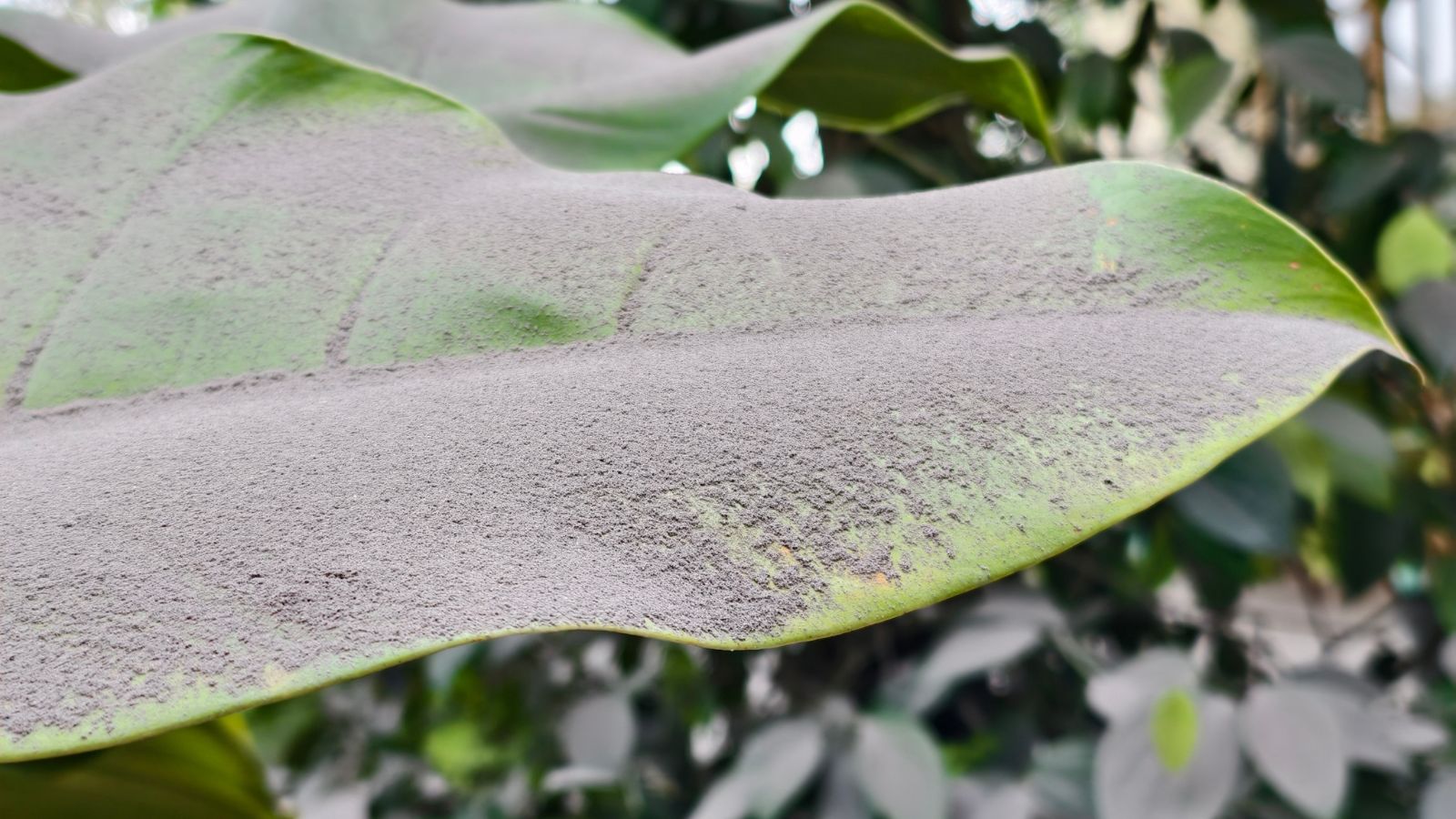 Ash settles on the leaves, impacting growth.
Ash settles on the leaves, impacting growth. Ash consists of dust particles, burnt flecks, and specks of debris that fall to the ground after wildfires. Like snow, it covers everything it touches. It leaves a terrible, toxic taste, and you’ll need to wash it off before eating your fruits and veggies.
If you’re farming flowers, the ash may fall onto their sticky trichomes and moist petals. The blooms will turn from colorful to dull gray-black. Covering them will help prevent the negative impacts from occurring.
Ash coats the soil. It has some beneficial nutrients for crops, but it may also have toxic metals and substances. Fires that burn homes and structures are particularly harmful, as they release chemicals from paints, treated wood, and plastics, among other substances.
Prevents Photosynthesis
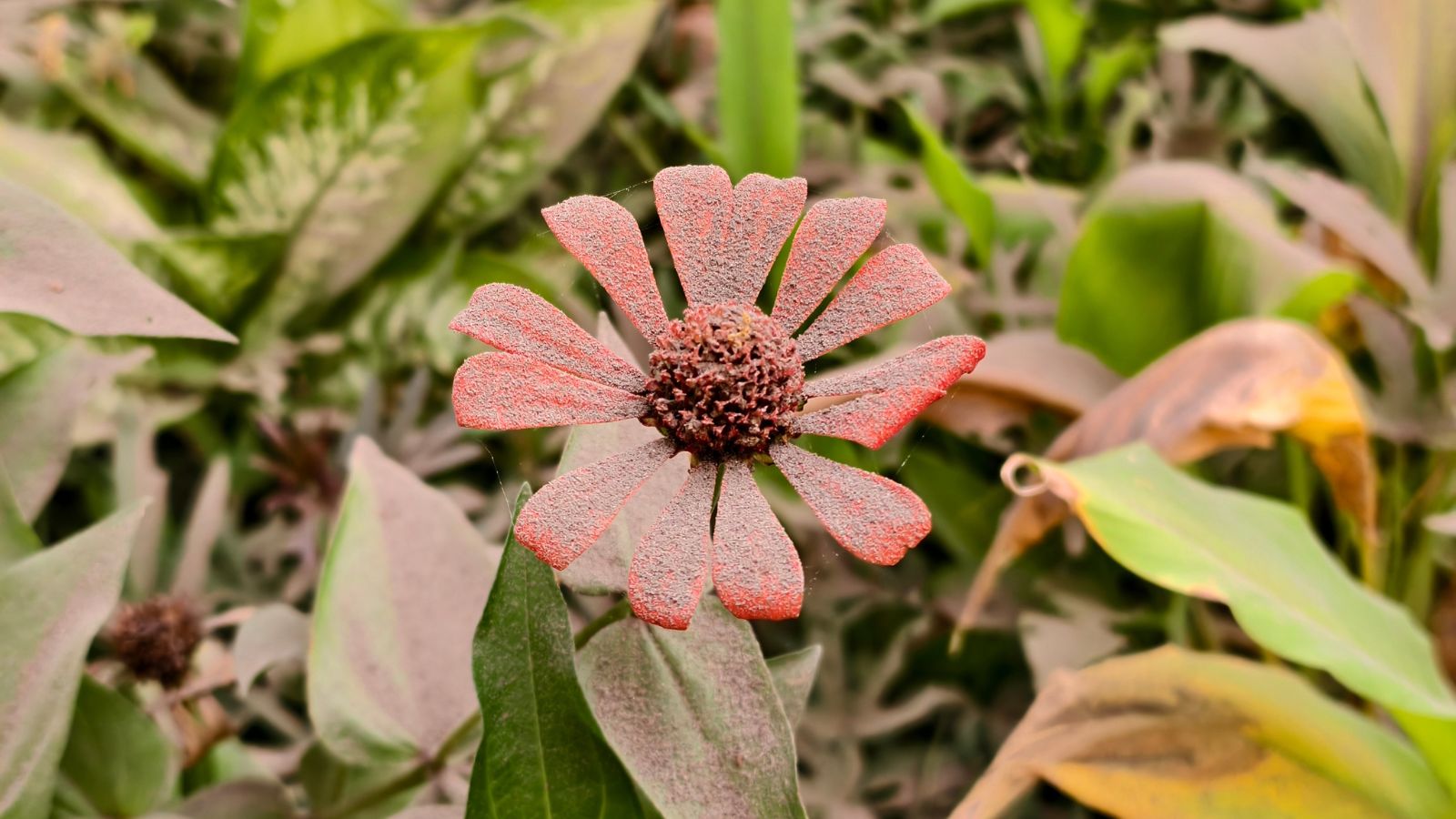 Lack of sunlight limits photosynthesis.
Lack of sunlight limits photosynthesis.Smoke prevents you from getting vitamin D, and it prevents plants from photosynthesizing! It blocks the sun’s rays from reaching through the atmosphere. Plants will struggle to produce energy for themselves if the smoke blocks the sun for a long period of time.
Garden wildfire smoke and ash together are devastating. Ash covers the leaves with a thick layer that prevents them from breathing. You may notice shriveled leaves if the smoke lasts longer than a week in your garden.
How smoke travels is dependent on the wind. It poses less of an issue if it dissipates over a day. Large fires generate smoke that covers the sky for days, making it dull orange as the sun tries to penetrate through the thick layer.
Makes Gardening Difficult
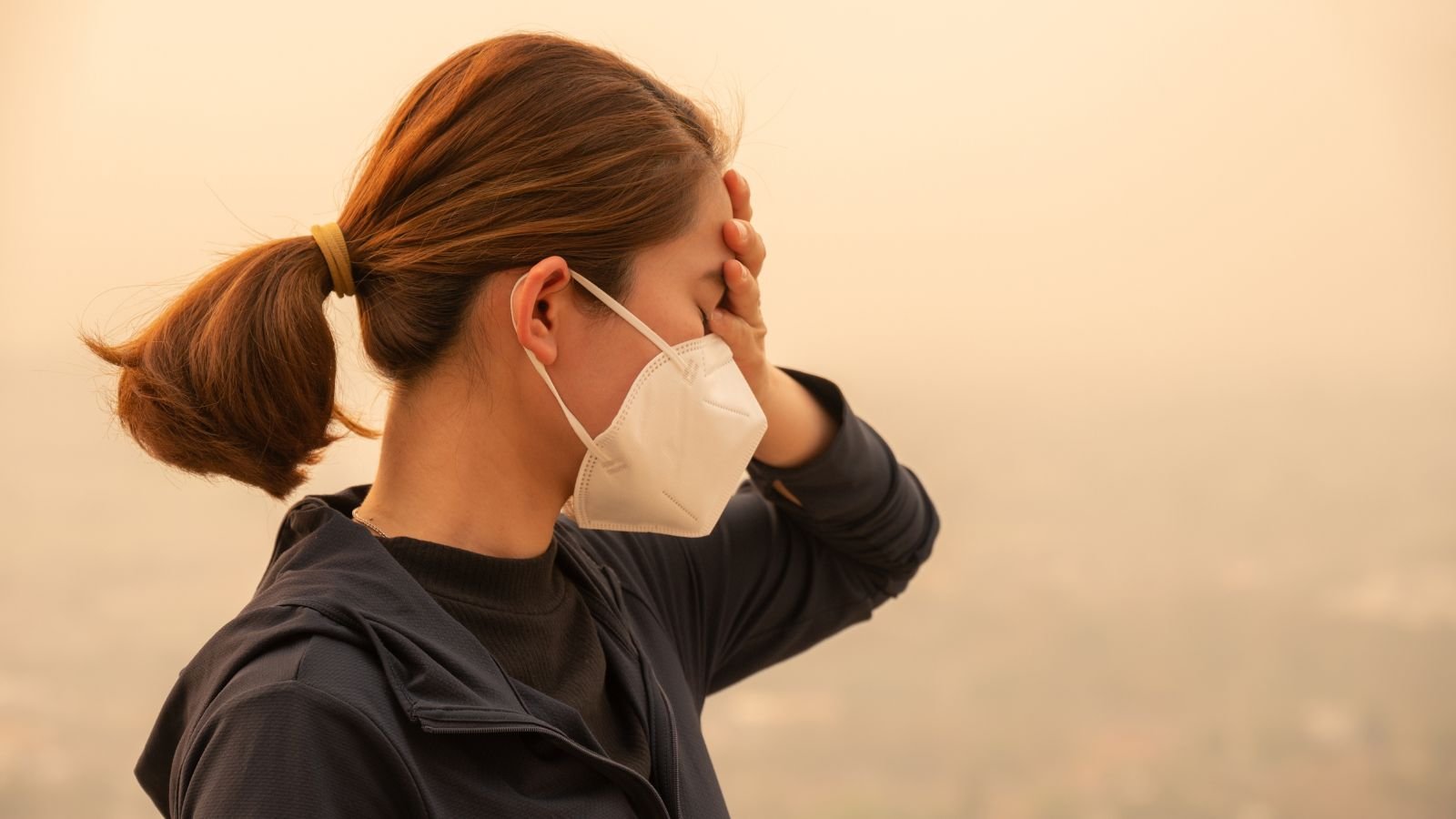 It’s best to stay inside rather than tending to your garden.
It’s best to stay inside rather than tending to your garden. Garden wildfire smoke is harmful to your health. It’s not good to breathe in the particles that float around after wildfires. You may wear a mask, though it’s best to avoid being outside altogether.
It’s safe to begin gardening again once the air quality returns to a normal range. Limit your outdoor exposure by getting the garden ready ahead of the fire season.
Prevent Negative Impacts
Use these techniques during and before the wildfire season to set your garden up for success. With a bit of prevention, you won’t have to worry when fires begin spreading near you.
Wear a Mask
 If you do need to go outside, always wear a mask.
If you do need to go outside, always wear a mask. A mask is crucial if there is smoke! It protects your lungs from the harmful effects of breathing in smoke and ash. Wear a high-rated type like the N95 or P100.
If the air quality index in your region is safe, between 0 and 100, it’s generally okay to garden without a mask. Numbers above 50 are harmful for some individuals with breathing sensitivities, and those above 100 are harmful for most people.
Cover Your Crops
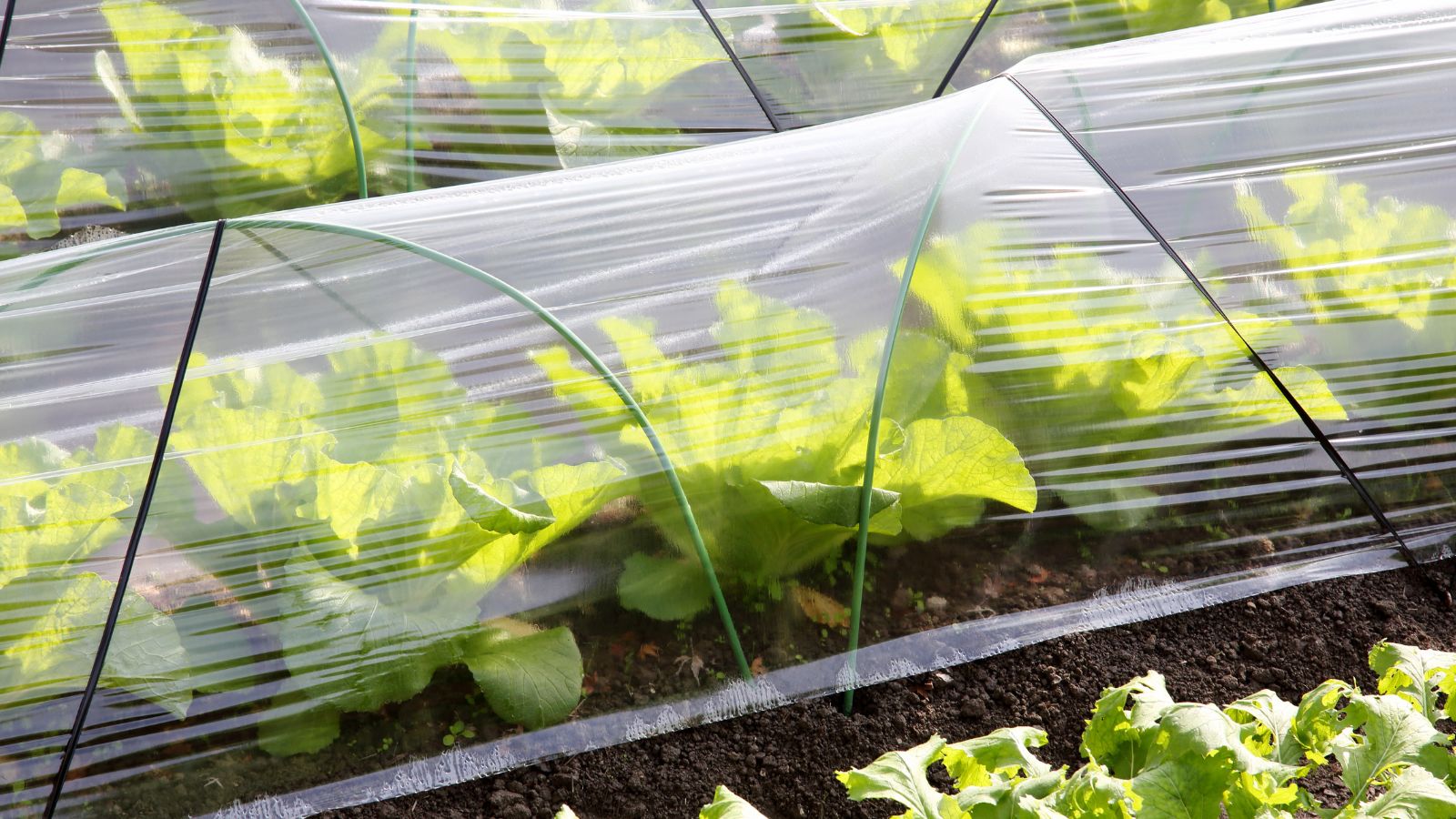 Row covers stop ash from settling on plants.
Row covers stop ash from settling on plants. The first thing to do after putting on a mask is to cover the crops. Any flowers, vegetables, or fruits you’d like to harvest will benefit from protection. One easy way to do so is with greenhouse plastic and metal hoops.
Stick the metal hoops into your raised beds, and drape the greenhouse plastic over them, clipping down its edges. For tall plants, you may put the plastic over them to prevent the ash’s negative effects.
In the absence of metal hoops, try PVC! PVC plastic pipes and similar materials work well to support the greenhouse plastic while not penetrating through it.
Move Potted Plants
 Move containers to a protected area away from harm.
Move containers to a protected area away from harm. Potted plants are easier to manage. Simply move them under cover to protect them from garden wildfire smoke and ash. Smoke and ashy particles may waft onto them despite the cover if winds are high. If so, protect them further with a clear plastic sheet.
Some plants may work well indoors. Move your most-prized ornamental flowering plants to a sunny room inside, and move them back outside once the fire dies down or the smoke goes away.
Set Up Automatic Irrigation
 Drip irrigation means you don’t need to manually water outside.
Drip irrigation means you don’t need to manually water outside. You don’t want to water while it’s smoky out! You’ll have to wear a mask, and it’s best to avoid outdoor exposure when a wildfire is raging.
Instead, automate your irrigation system so it waters without you present. Attach the current system to a timer, or find an all-in-one sprinkler system you can set up yourself.
The wildfires of 2020 were particularly devastating where I live in Oregon, when smoke filled the skies for an entire week. The garden needs consistent moisture to survive both the heat of summer and the threat of wildfire smoke, and a week is too long for it to endure without watering. Automating your system can help you prevent negative impacts from disasters like those of 2020.
Create an Indoor Garden
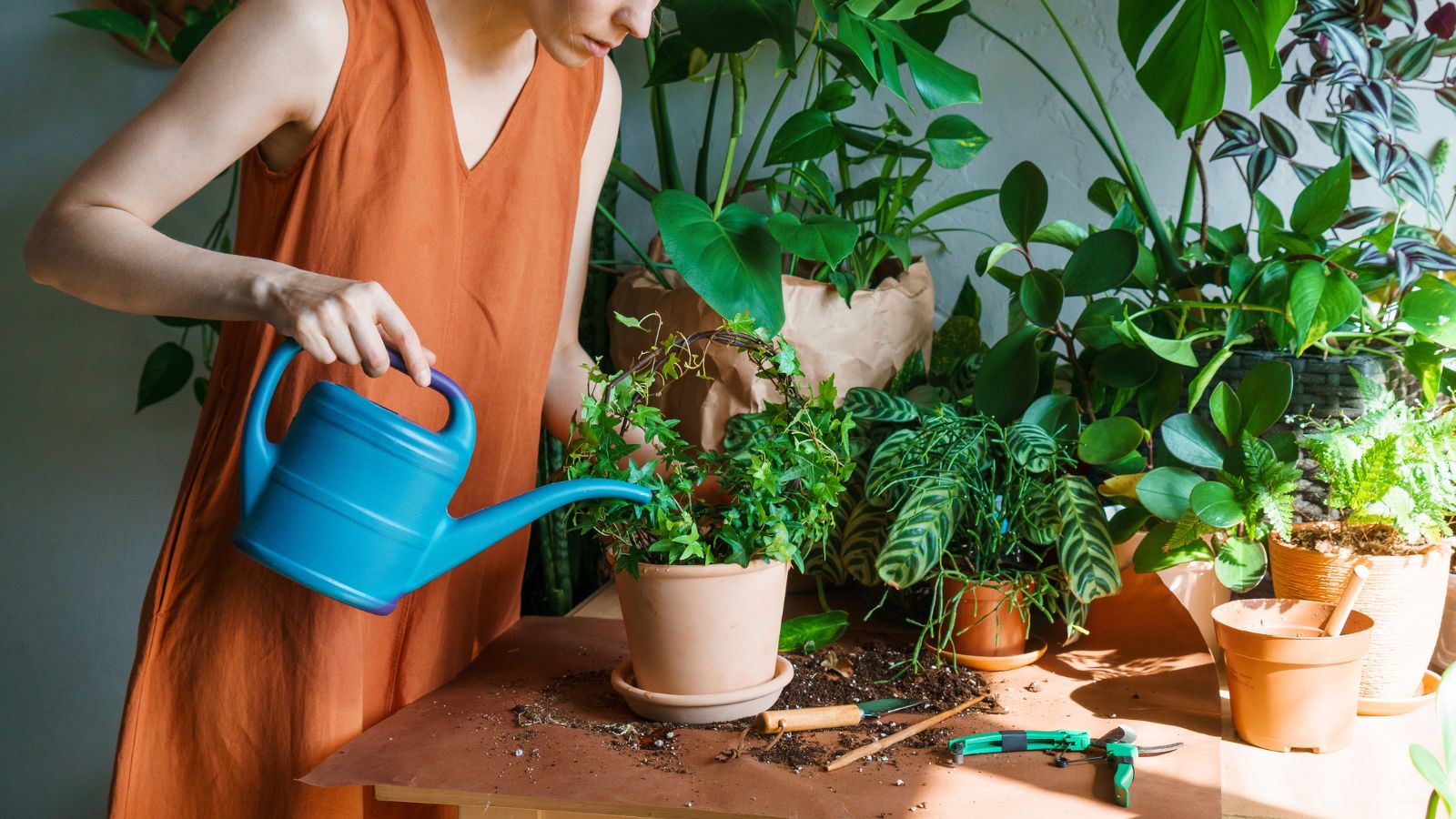 Focus on tending your indoor plants at this time.
Focus on tending your indoor plants at this time. When wildfires grow incredibly common at summer’s end, it may be best to transition to indoor gardening for a while. Many crops, like lettuce, herbs, beans, and tomatoes, have varieties that grow well indoors in containers.
An indoor garden needs airflow, light, and water for a thriving system. Use a bright window or grow lights for light, and a watering can to water. Keep the pots in a tray so that excess moisture has somewhere to drain.
It’s difficult to replicate the outdoors indoors, though some crops are great for beginners. Try leafy greens, annual herbs, and cherry tomatoes to start.
How to Deal with Damaged Crops
If ash and wildfire smoke settle in your garden, fear not! There are ways to mitigate the damage. Protect yourself by protecting your garden. Water is your friend, as it’ll wash off the ash to make your produce safe to eat.
Wear Protective Gear
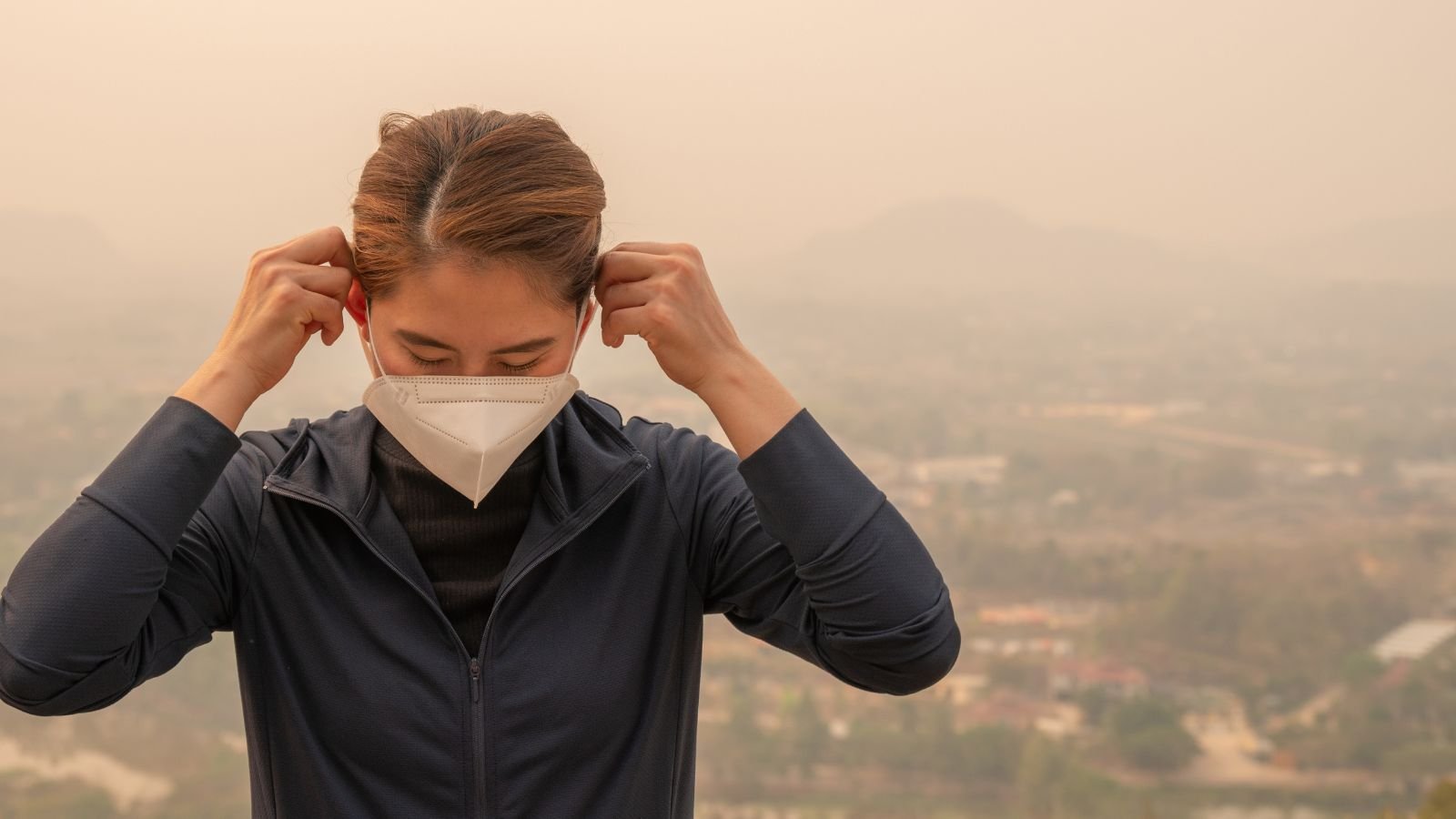 Masks and gloves are recommended before cleaning up.
Masks and gloves are recommended before cleaning up. Before stepping outside, put on some protective gear to keep yourself safe. Wear long sleeves and gloves, pants, and closed-toed shoes. Use old clothes you don’t mind getting dirty, as the ash will make black marks on your clothing.
This may seem harsh, but it’s truly necessary! You don’t want to play around with the impacts of wildfires. As mentioned before, houses and structures release toxic chemicals when they burn. Some time needs to pass for the environment to process the debris.
After harvesting, change out of your clothes and wash them to prevent the smoke and debris from spreading indoors. Leave your shoes outside to avoid tracking dust inside.
Wash Fruits and Vegetables
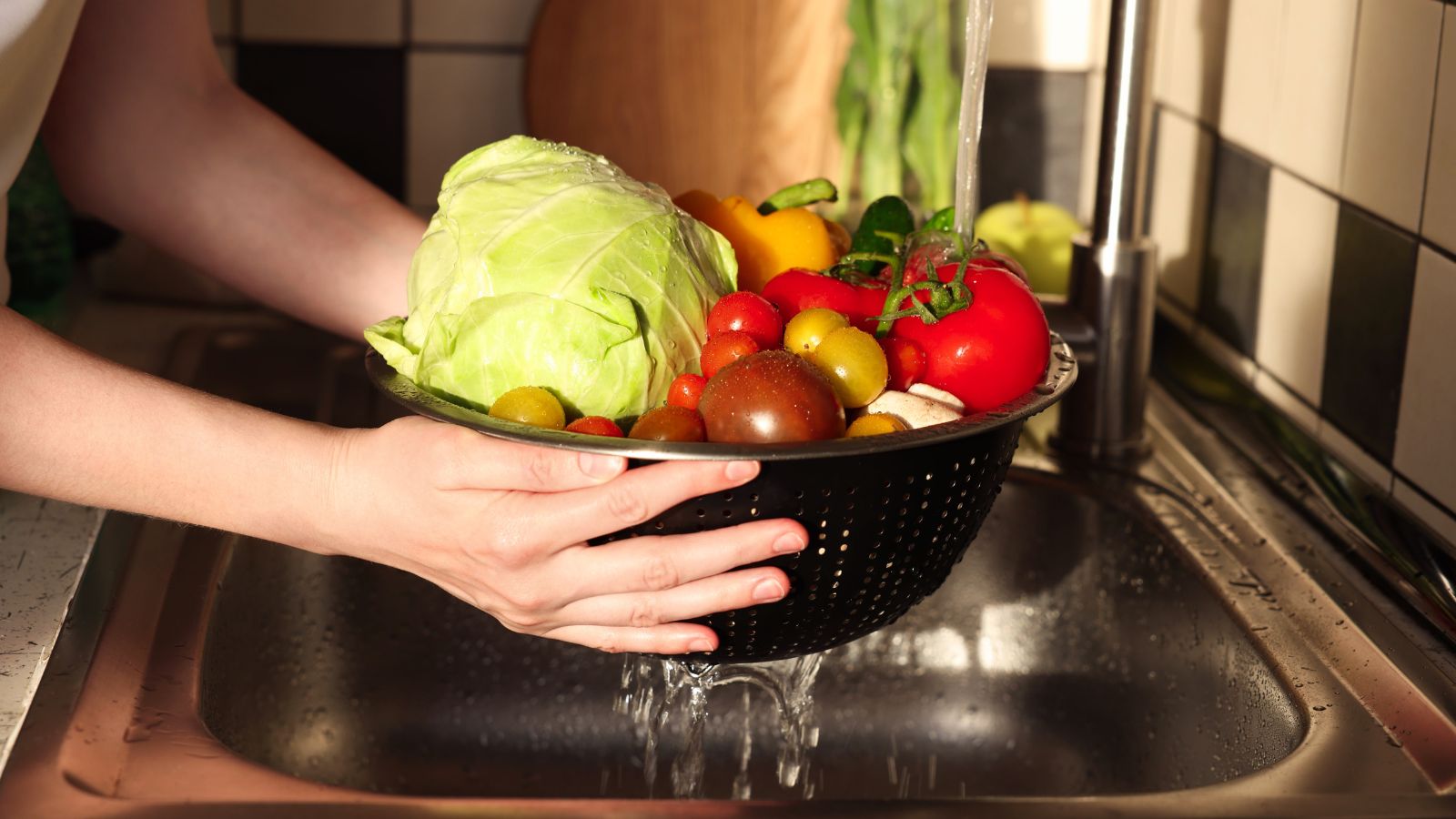 Wash produce outside, and again when you bring it inside.
Wash produce outside, and again when you bring it inside. This is, perhaps, the most important step. Washing your homegrown produce prevents the negative effects of toxic ash and smoke. Wash it when you harvest it outdoors, and again after bringing it indoors. If it’s entirely covered and you can’t see the skin underneath, discard it in your compost.
Use hose water outdoors to get most of the debris off. Then, bring the fruits and veggies inside for a more thorough cleaning. Place your crops in the sink, and use the running water to remove harmful substances. Place them to the side.
Then, mix water with white vinegar at a 10:1 ratio. Soak the produce in the mixture for ten minutes to dislodge any lingering debris. Remove it from the solution, rinse it, and set it aside to dry before storing it further.
Some mechanical preparation helps, too. Peel root crops and cook them before eating. You may also peel apples, tomatoes, and similar fruits.
Salvage Flowers
 Wash flower buds after cutting before you bring them indoors.
Wash flower buds after cutting before you bring them indoors. Flowers are difficult to salvage. Washing them may ruin their petals or bloom structure, depending on how flimsy they are. It may be best to trim the ash-covered blooms to promote new ones to grow.
If, however, you’re harvesting flower buds, you may treat them as fruits and vegetables. Wash them outdoors and again indoors, and soak them in a vinegar solution before letting them dry. Rose buds, for example, take well to this treatment.
Water Plants
 Wash the debris away, don’t blow the dust off.
Wash the debris away, don’t blow the dust off. Water is your friend! Don’t blow the dust off with a leaf blower. Instead, use a watering hose or sprinkler to gently wash the debris off your plants and out of the soil.
Tough plants tolerate a wiping down. Use a soft, moist cloth to remove the dust from their leaves, stems, and buds. Water them afterward to remove any remaining debris.
In The Future
As wildfires grow more prevalent, it’s important to find new ways to mitigate the negative impacts they cause. With some time and attention, you’ll know exactly what to do when fires arrive at the end of summer.
Cheat the Seasons
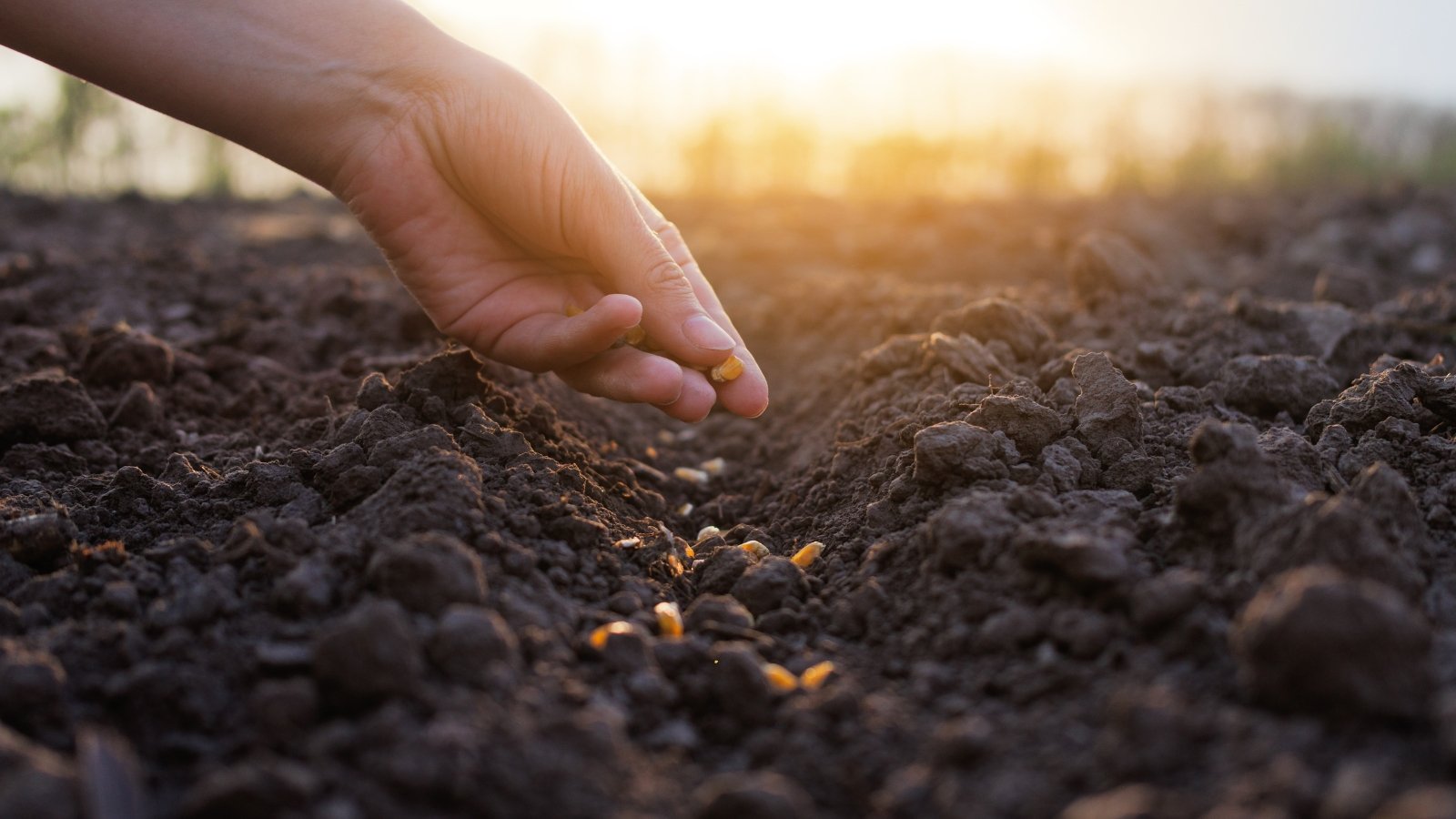 If wildfires are common, plan around them.
If wildfires are common, plan around them. A greenhouse or makeshift structure is incredibly helpful during wildfires. Greenhouse plastic keeps harmful debris off your plants. Typically, you’ll roll up the plastic during the day. During wildfires, leave the covering on until the air quality improves.
Further cheat the seasons by sowing seeds successively. Plant root crops and leafy greens again after the smoke settles for another harvest at the end of the year.
Fall rains help in the fight against wildfires and their smoke. Use the time to grow fall crops, like cole crops, beets, and turnips.
Grow Different Varieties
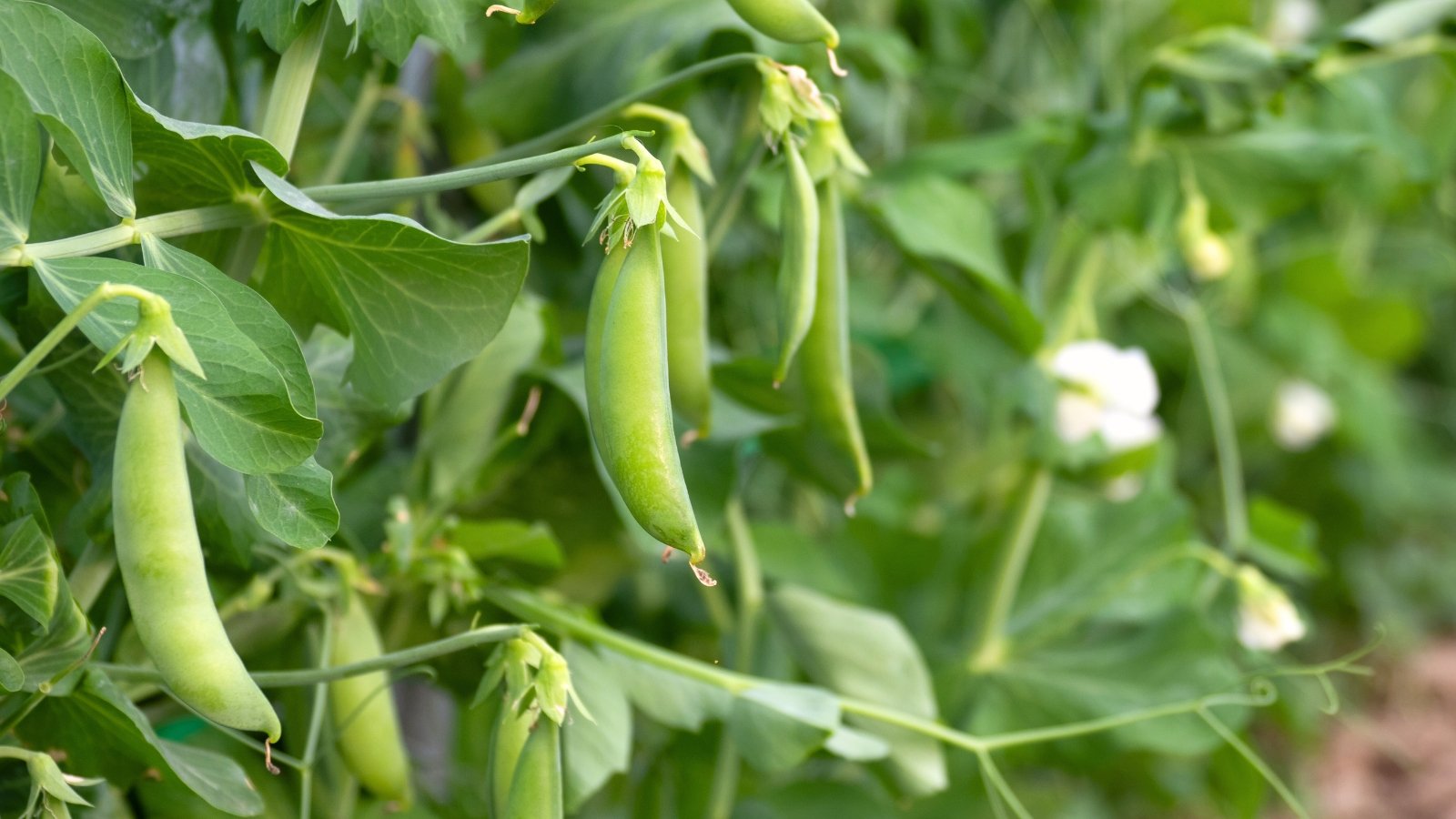 Variety selection allows you to harvest early or grow in containers.
Variety selection allows you to harvest early or grow in containers. Some varieties finish their harvest period before others! Quick-growing determinate tomatoes and bush beans are perfect. They produce earlier than long-growing varieties, and they finish growing when they’re done producing.
When the plants are done growing, set in another round of transplants for an additional harvest—try this with peas, like ‘Patio Pride’. This variety works well in containers, meaning you can move it under cover when the smoke is abundant.
It also helps to cultivate fire-resistant trees and shrubs that protect the landscape. Use these on the perimeter of your home to further thwart the wildfire’s negative effects.
Know What’s Coming
 Keep an eye on the forecasts to protect your garden.
Keep an eye on the forecasts to protect your garden. And finally, it helps to know what’s coming. Wildfires are devastating and hard to endure. Know that you may lose some of your produce, and consider yourself lucky if your garden endures.
What’s most important during these disasters is your safety. Heed all local evacuation orders, and stay informed if the fire is nearby. Know that in a few months, the rains will fall and the seasons will change. The garden will restore itself in time.


 2 days ago
7
2 days ago
7
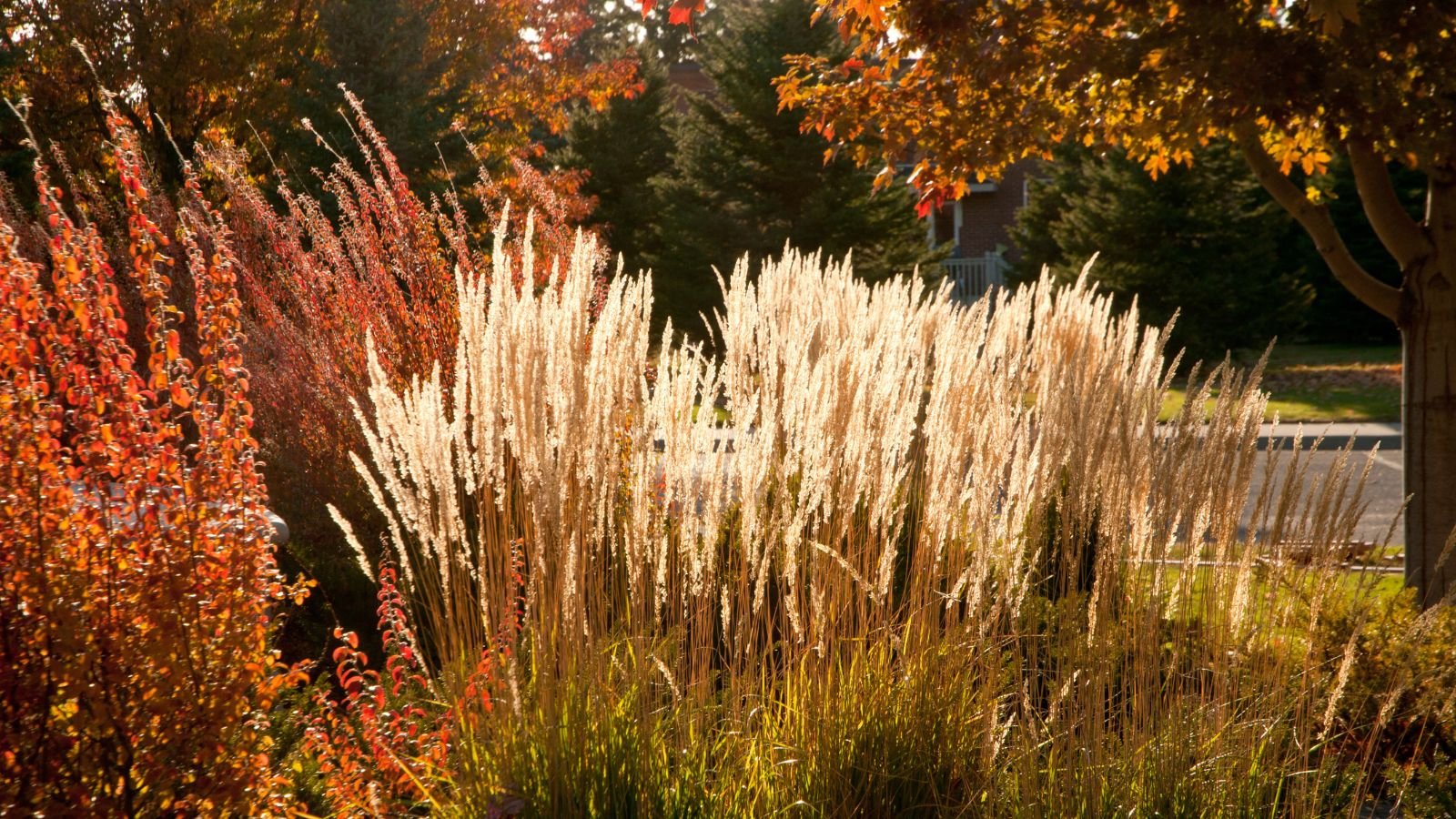



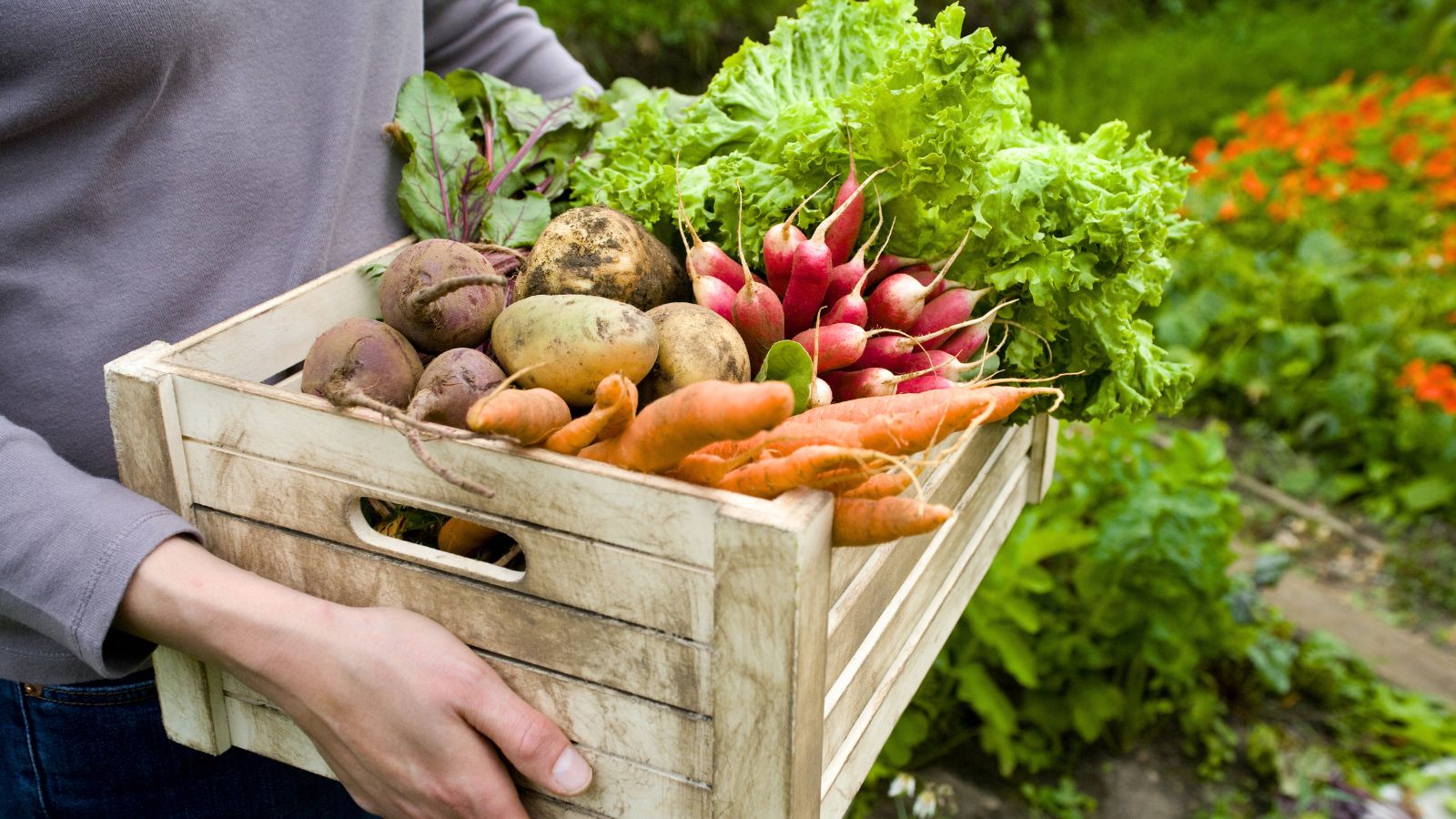
















 English (US) ·
English (US) ·  French (CA) ·
French (CA) ·